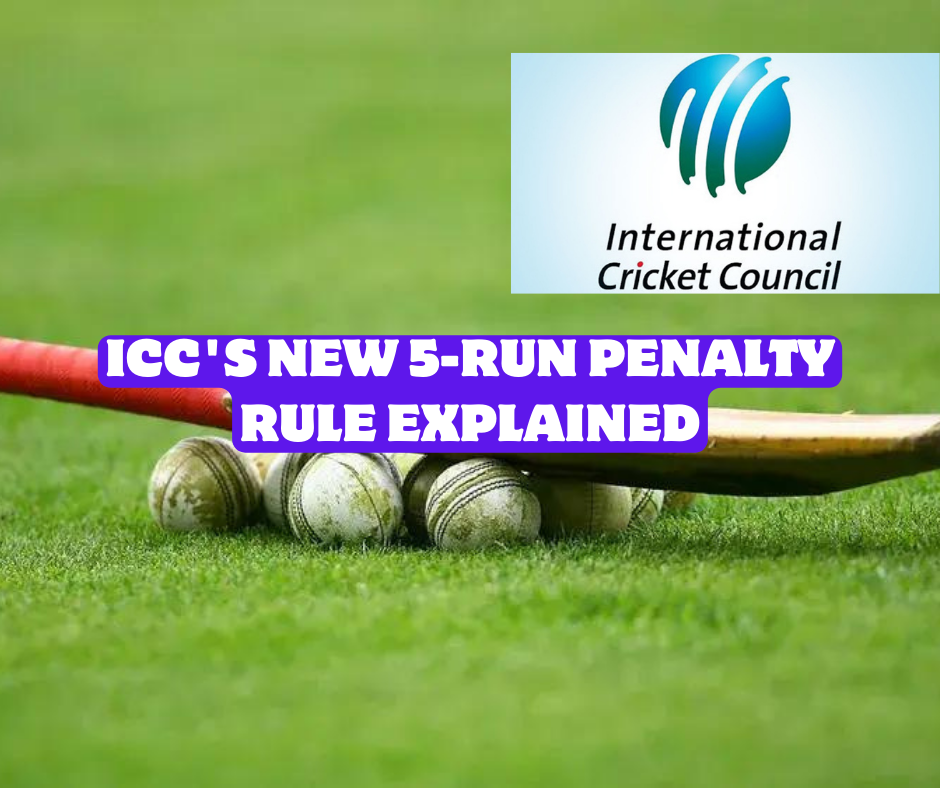
Table of Contents
Cricket enthusiasts worldwide are in for a change as the International Cricket Council (ICC) recently announced a significant modification to the rules governing men’s One Day Internationals (ODIs) and Twenty20 Internationals (T20Is). The change, designed to expedite the pace of the game, introduces a 5 run penalty rule in cricket for a specific offense, adding a new layer of excitement and urgency to the sport.
The Need for Speed: ICC’s Initiative to Accelerate Cricket Play
In a bid to maintain the momentum and entertainment value of cricket matches, the ICC has been tirelessly working on ways to quicken the pace of the game. Recognizing that fines alone may not be sufficient motivation for teams to adhere to time constraints, the cricket governing body has implemented in-match penalties.
ICC Chief Executives Meeting in Ahmedabad
This groundbreaking decision emerged from discussions held at the ICC Chief Executives meeting, where cricket authorities decided to take a proactive step toward addressing the issue of slow play. The decision, finalized in Ahmedabad, aims to strike a balance between maintaining the integrity of the game and respecting the time of both on-site spectators and television viewers.
5 Run Penalty Rule in Cricket: A Swift Consequence for Delayed Overs
Under the new 5 run penalty rule in cricket, if a bowling team exceeds the 60-second time limit between overs for the third time in an innings, a 5 run penalty will be imposed. This penalty, introduced on a trial basis, is part of the ICC’s broader initiative to regulate the time taken between overs. The trial period is set to run from December 2023 to April 2024, allowing cricket authorities to assess its impact on the game.
Existing Penalty and its Impact on the Game
In addition to the 5 run penalty rule in cricket, the ICC reminds teams of the existing in-field penalty. Teams that fail to complete 48 overs within the stipulated time in an ODI or 19 overs within the stipulated time in a T20I must bowl the last two and the final over, respectively, with only four fielders outside the 30-yard circle. While this rule has had limited impact in ODIs, T20 matches have seen captains making a conscious effort to expedite play.
Test Cricket’s Stricter Over Rate Penalties
Interestingly, Test cricket, where maintaining spectator interest is often considered a challenge, has also seen a tightening of over rate penalties. Teams like England and Australia lost crucial World Test Championship points in recent series due to slow over rates, emphasizing the global push for a faster, more engaging game.
Challenges of Implementing the Stop Clock
The introduction of a stop clock during men’s ODI and T20I cricket matches is a bold move, but its effectiveness relies on proper officiation. Drawing a parallel with tennis, where point penalties are in place for delays between serves, the challenge lies in ensuring consistent enforcement. Recent controversies, such as the ‘timed out’ declaration in the ODI World Cup, highlight the need for precise timekeeping and fair application of the rules.
The Angelo Mathews Controversy: A Case in Point
The controversial ‘timed out’ decision involving Angelo Mathews during the ODI World Cup raised questions about the application of time-related rules. The new regulations stipulate that a batter has two minutes, instead of the previous three, to take strike after a wicket falls. However, disputes like the one involving Mathews underscore the importance of clear communication and understanding of the rules by players, officials, and fans alike.
We have already explained ‘Timed Out’ in our previous article: Understanding ‘Timed Out in Cricket’: Angelo Mathews’ Unusual Dismissal Explained
Evolving Regulations: Changes to Pitch and Outfield Monitoring
Beyond the focus on match pace, the ICC has also made changes to the process of banning a pitch from international cricket. Amendments to pitch and outfield monitoring regulations include simplifying the criteria for pitch assessment and raising the threshold for venue demerit points. The international status of a venue could now be removed with six demerit points over a five-year period, reflecting the ICC’s commitment to maintaining high standards in cricket infrastructure.
Conclusion: A New Era for Men’s ODI and T20I Cricket
As cricket enthusiasts anticipate the implementation of the 5-run penalty rule on a trial basis, the sport seems poised for a new era of excitement and efficiency. The ICC’s continuous efforts to balance tradition with innovation reflect a commitment to keeping cricket relevant and captivating for fans worldwide. The coming months will undoubtedly offer insights into the impact of these changes on the game’s dynamics, player strategies, and overall spectator experience.
You can also read:

5 thoughts on “ICC’s New 5 Run Penalty Rule in Men’s ODI and T20I Cricket: A Move to Speed Up the Game!”